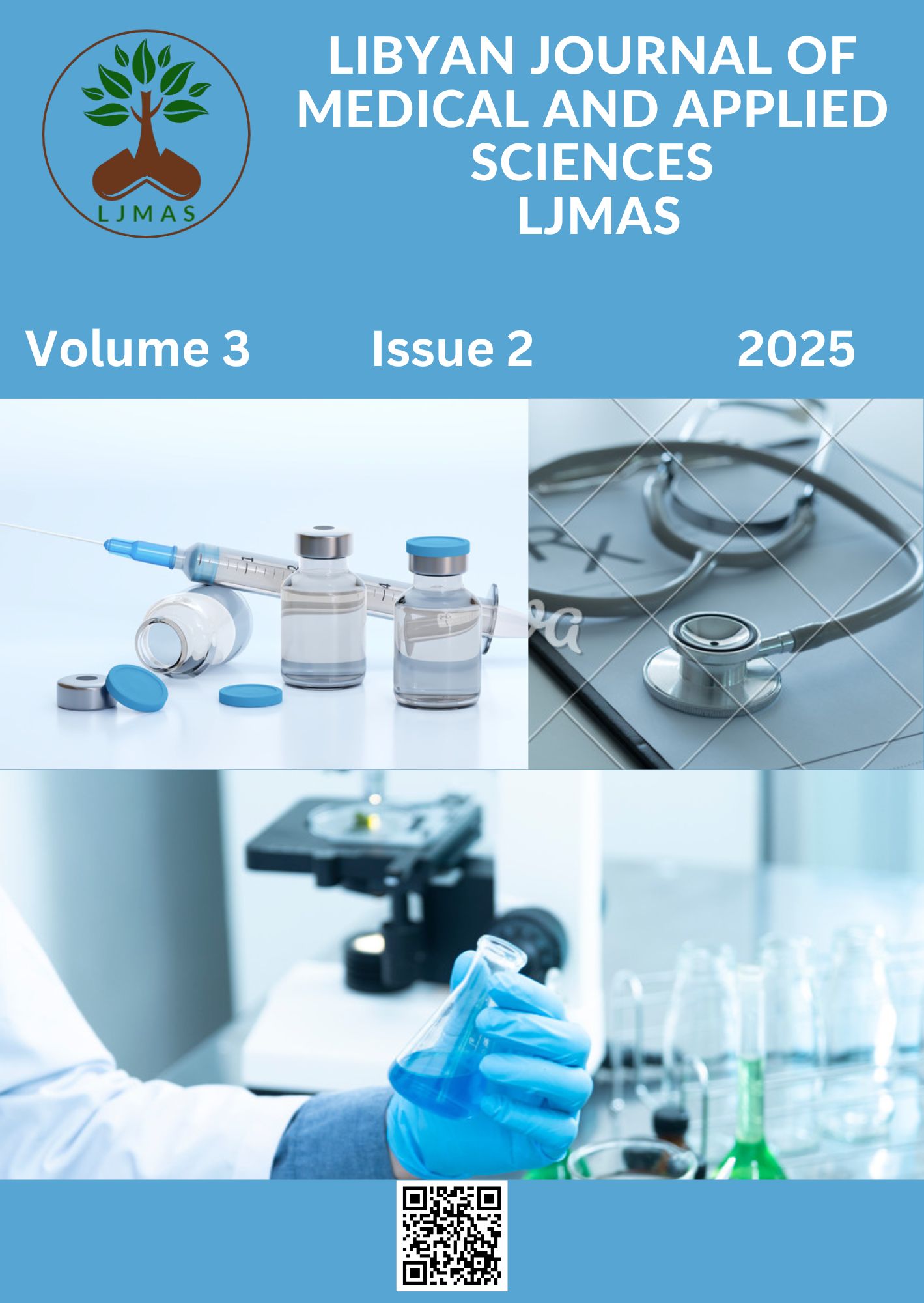Effect of Olive Cake on Growth Performance, Carcass and Hematological Parameters of Local Barbary Lambs
Main Article Content
Abstract
This study was carried out in early 2025 on a private farm in Bani Walid, Libya, to evaluate the impact of olive cake supplementation on growth performance, carcass characteristics, and hematological parameters of local Barbary lambs. A total of 45 lambs, approximately 3 months old with an average body weight of 25 kg, were randomly allocated into five treatment groups (9 animals per group) based on body weight. The feeding trial lasted for 90 days and followed a completely randomized design.
The dietary treatments included a control group fed a basal diet and four groups receiving increasing levels of olive cake at 10%, 15%, 25%, and 30% inclusion rates. These levels were selected based on the average active components found in olive cake. All lambs were weighed upon arrival and assigned randomly to the respective treatment groups.
Results indicated that increasing the level of olive cake up to 30% led to improvements in growth metrics such as initial and final body weight, total weight gain, daily gain, and overall feed intake. Similarly, enhancements were observed in carcass traits, including fasting live weight, hot and cold carcass weights, non-carcass components, carcass cuts, and fat-tail weight.
In terms of blood parameters, lambs receiving olive cake supplementation showed favorable hematological and biochemical profiles compared to the control. Parameters such as urea nitrogen, glucose, cholesterol, HDL, LDL, AST, ALT, ALP, creatinine, RBC, WBC, hemoglobin, packed cell volume (PCV), mean corpuscular volume (MCV), mean corpuscular hemoglobin (MCH), and mean corpuscular hemoglobin concentration (MCHC) were all improved in the olive cake groups. In contrast, the control group consistently showed lower values across growth, carcass, and blood indices.
Article Details

This work is licensed under a Creative Commons Attribution 4.0 International License.





